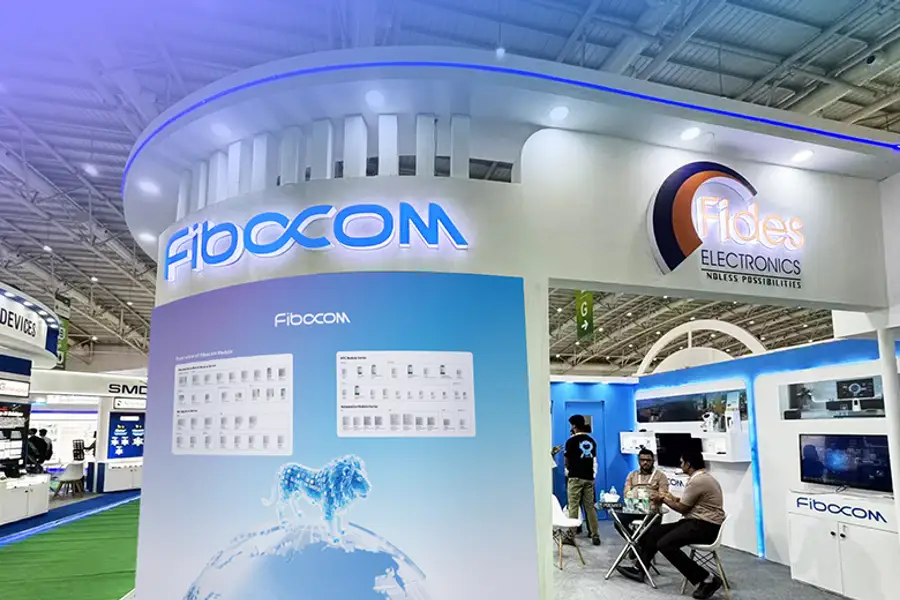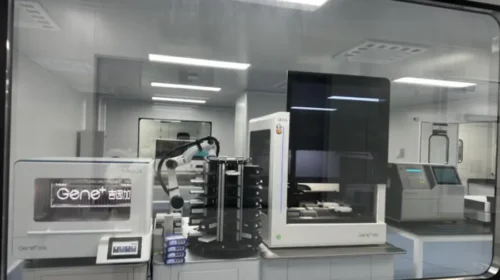Fibocom limps out of IPO gate, weighed down by sagging margins

The wireless module maker’s shares fell 11.7% in their Hong Kong debut and continued to slump the next day, but still trade at an inflated valuation
Key Takeaways:
- Fibocom’s shares priced strongly as the company raised $360 million in its Hong Kong IPO, but then fell in their trading debut on concerns about overvaluation and margin pressure
- The wireless module maker’s revenue rose 23.5% in the first half of this year, but its profit grew by a far slower 4.8% as its gross margin got squeezed
By Doug Young
Hong Kong may be having one of its best IPO markets in years, but even the recent wave of investor euphoria wasn’t enough to boost the Wednesday trading debut for wireless module maker Fibocom Wireless Inc. (0638.HK, 300638.SZ). Things looked promising for the stock after the shares priced at HK$21.50, representing the top of their range. But falling margins and slowing profit growth ultimately spooked investors.
We should also note that even after their disappointing debut, Fibocom’s newly listed Hong Kong shares still trade at a frothy valuation that’s even higher than its older Shenzhen-listed stock. That’s highly unusual from a historical perspective, and shows how bubbly the current IPO market has become in Hong Kong. More on that shortly.
Fibocom’s stock began to sag almost immediately after its debut, ultimately closing down 11.7% on Wednesday. The declines continued on Thursday, with the stock down about 8% in morning trade at HK$17.44, nearly 20% below the IPO price.
Fibocom is one of a growing number of stocks listed on China’s domestic markets in Shanghai and Shenzhen that is seeking second listings lately in the more globally focused Hong Kong. While many of those companies are seeking Hong Kong listings to raise their global profiles as they expand beyond China, Fibocom seems to be an exception to that pattern.
Founded in 1999 in the southern boomtown of Shenzhen, the company makes little or no mention of using its HK$2.8 billion ($360 million) in net proceeds from the new listing for global expansion. Instead, it says about half of the money will go to R&D at its existing Chinese facilities, with another 15% earmarked for construction of a new manufacturing facility in Shenzhen.
That said, the company has quite a lot going in its favor. It is the world’s second-largest maker of wireless modules that are an important component in the fast-growing markets for smart vehicles and smart home devices. That market for such modules is highly concentrated, with the top five players – mostly in China – controlling about three-quarters of all sales, meaning Fibocom is unlikely to face major new competition anytime soon.
But competition within that group is driving down prices as the technology rapidly matures, which is pressuring Fibocom’s margins and profits. That erosion has gained momentum this year, with the company’s gross margin falling to 16.4% in the first half of this year, down from 18.2% for all of 2024 and the lowest level in the three and a half years of data covered in Fibocom’s prospectus.
Despite the weak debut, the company’s Hong Kong stock currently trades at a lofty price-to-earnings (P/E) ratio of 53, which is well ahead of the 38 multiple for its older Shenzhen listing. That’s quite a reversal from the past, when shares of dual-listed Chinese companies typically traded at higher levels on Mainland markets in Shanghai and Shenzhen compared with their Hong Kong multiples. That seems to be a direct result of the recent Hong Kong IPO euphoria, which looks set to make the market the world’s biggest for new listings this year, ahead of even the New York Stock Exchange and Nasdaq.
Correction coming?
Fibocom isn’t the only dual-listed stock currently trading at a higher multiple in Hong Kong than on the Chinese Mainland. Another notable case is CATL (3750.HK; 300750.SZ), whose Hong Kong-listed stock trades at a P/E multiple of 35, well ahead of the 26 for its older Shenzhen-listed shares. CATL’s shares have roughly doubled since their Hong Kong IPO in May, as global investors salivated at a chance to buy into the world’s largest maker of electric vehicle (EV) batteries.
But the valuation gap is far smaller for less cutting-edge stocks, with shares of air condition maker Midea (0300.HK; 000333.SZ) and mining giant Zijin (2899.HK; 601899.SH) both trading at roughly the same P/E multiples in both Hong Kong and on the Mainland. The key takeaway in this regard seems to be newly listed Chinese tech stocks are becoming investor favorites in the Hong Kong IPO boom, though we suspect those stocks could ultimately be due for a correction.
Fibocom looks like a good argument for such a correction, since it’s in a rapidly maturing high-tech area, despite the strong growth potential for wireless modules with the rise of smart cars and smart home devices. The company was the world’s second-largest maker of such modules with 14.4% of the market last year, behind industry leader Quectel (603236.SH), based in Shanghai, with 23.8% of the market, according to market data in the prospectus.
The global market for such wireless modules is growing quickly, but not at lightning speed, with sales expected to rise from 48.6 billion yuan ($6.82 billion) this year to 72.6 billion yuan in 2029, representing 10.6% annual growth, according to the prospectus.
Fibocom is growing quite a bit faster than the broader market, reporting its revenue from continuing operations rose 23.5% in the first half of this year to 3.71 billion yuan from 3 billion yuan a year earlier, roughly the same as its growth rate last year. Modules account for the lion’s share of its business, making up 93% of revenue in the first four months of this year. The rest comes from solutions that typically carry higher margins, and we should note that such solutions have been growing from just 1.2% of revenue in 2022 to 5.8% in the first four months of this year.
But while revenue growth has been strong, rising material costs and falling prices for its finished modules have resulted in the falling margins that we previously noted. As a result, the company’s profit from continuing operations rose just 4.8% in the first half of the year to 218.5 million yuan from 208.5 million yuan a year earlier. Such profit erosion is likely to continue for the foreseeable future as the technology continues maturing and competition remains stiff, which is likely to continue undermining Fibocom’s Hong Kong stock.
To subscribe to Bamboo Works free weekly newsletter, click here






